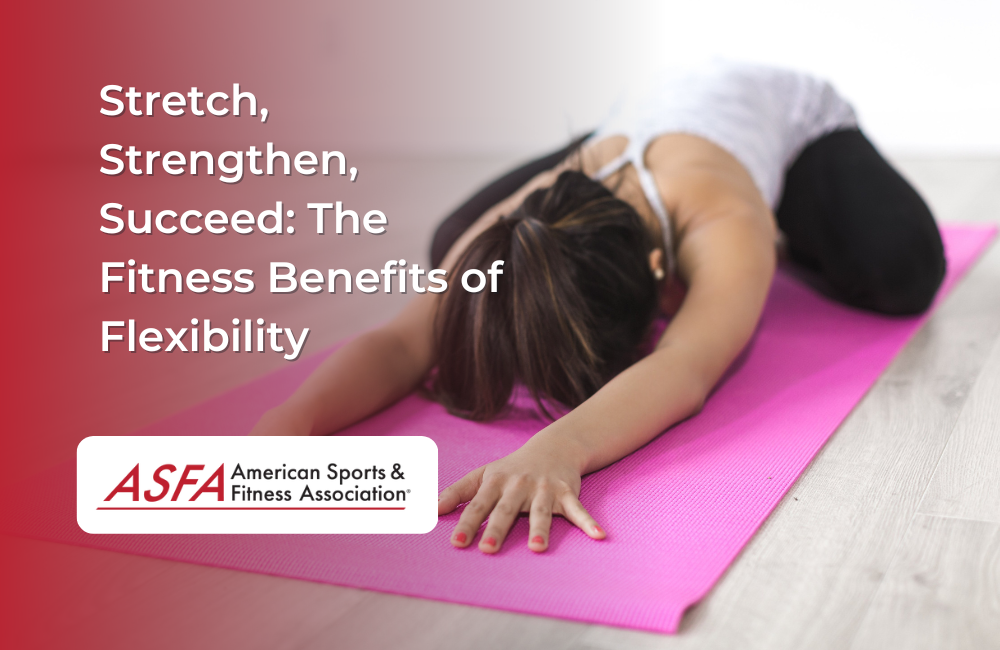If you're like me, you roll your eyes at the stretching section of any fitness class. You might even secretly think that it's a waste of time. But flexibility training is much more than just a break from your workout—it's an essential part of overall health and fitness. And if you're not stretching regularly, here are six reasons why you should be:
Less stress on your body.
Flexibility is the ability to move a joint through its full range of motion. It's important for your body because it helps reduce stress on your joints and muscles, which can reduce pain and make you more comfortable exercising.
The less stress on your joints, the less likely you are to injure them. The more flexible your muscles are, the easier it will be for them to stretch during exercise or other activities like yoga or Pilates (which we'll talk about next). Increased flexibility from stretching also improves posture by reducing strain on ligaments that hold up bones in our spine; when those ligaments aren't stretched properly over time due to lack of movement in certain areas of our bodies--like sitting all day at work--they become tight and cause backaches! Stretching helps improve blood flow through veins and arteries by increasing capillary beds; this helps lower blood pressure as well as reducing risk factors associated with heart disease such as high cholesterol levels.
Increased range of motion.
Stretching can help you improve your range of motion, which is important for everyday movement and exercise. Increased flexibility can help with injury prevention, as well as making it easier to move more easily. You should hold stretches for 30 seconds to 1 minute, or until you feel a slight burn in the muscles being stretched. You can do these exercises at home or anywhere else that's convenient for you--just make sure there aren't any distractions around!
If stretching before exercise is recommended by your doctor or physical therapist, follow these guidelines:
- Warm up with light cardio (walking) for 5 minutes before stretching; this will increase blood flow through the joints and muscles that will be used during exercise so they're ready when needed later on
- Stretch slowly and gently; never bounce! Bouncing causes too much stress on joints which could lead to injury instead of preventing one
Improved athletic performance.
Flexibility, or the ability to stretch your muscles and joints, is one of the most important elements of fitness. Having flexibility allows you to move more efficiently, which can help improve your athletic performance. It also helps reduce muscle soreness and allows you to recover faster from injury, making it an essential part of any training regimen.
Flexibility can help improve blood circulation and decrease blood pressure as well as improve mental health by relieving stress through deep breathing exercises such as yoga or tai chi chuan (tai chi).
Reduced risk of injury and pain.
Flexibility is the key to avoiding injury and pain. It's important for all types of exercise, whether you're a runner or a yoga enthusiast. Stretching can help you avoid future injuries, as well as reduce pain from existing ones.
Here are some stretches to do for every part of your body:
- Stretch your back by lying down on your stomach and placing one hand behind your head while keeping the other arm straight over your head with its palm facing up. Gently pull yourself forward until you feel a stretch in the middle of your back (the area between both shoulder blades). Hold this position for 20 seconds before switching sides.
- If you have knee pain, try doing squats while holding onto something sturdy like a countertop or chair.
- For ankle mobility work on balancing on one leg while standing still or walking around slowly without using any assistive devices such as crutches/cane etc., until comfortable enough before progressing further by trying stepping up onto higher surfaces such as boxes, etc.
Improved blood circulation.
Flexibility is one of the most important factors in improving blood circulation, as it allows you to move your joints through their full range of motion. This can help with circulation problems, reduce stress on your muscles and joints, and keep them healthy overall. In fact, staying fit is an investment in future years--regular stretching helps maintain muscle tone which means less aches and pains when you're older!
Flexibility is an important part of overall fitness, no matter what your goal is!
Flexibility is an important part of overall fitness, no matter what your goal is!
- Flexibility is important for all types of exercise: Whether you're a runner or a weightlifter, being flexible will help you perform better and more safely.
- Flexibility is also good for your health: Being able to move through different ranges of motion can help prevent injuries (like muscle strains), improve circulation and digestion, as well as boost mood by releasing endorphins (the hormones that give us that "feel-good" feeling). You'll feel better when you're more flexible!
- Flexible muscles are stronger muscles: By increasing the range of motion at which we can generate force from our joints during movement tasks such as running or jumping--or even just bending down to pick something up off the floor--we allow our bodies natural healing process to work more effectively after the injury occurs because it allows tissues time for repair before loading with high forces again during heavy lifting sessions later on down the line once healed sufficiently enough from past injuries sustained earlier on in life due largely in part from the lack thereof proper warm-up techniques prior this type activity performed without first properly stretching beforehand.
Conclusion
With this information, you're ready to start stretching. The key is to be consistent and persistent with your stretching routine, even if it feels difficult at first. You will see results if you keep at it!




